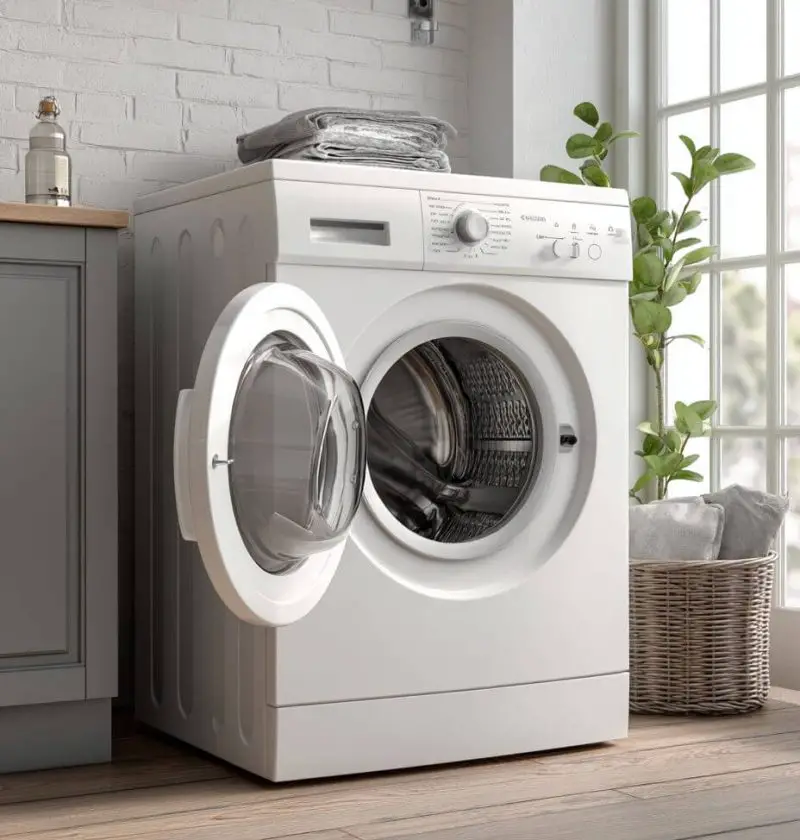Save This Recipe
Let me tell you something I wish someone had told me years ago: just because your washing machine handles soap and water doesn’t mean it cleans itself. I used to think the suds did all the work — you know, like some magical self-care spa for appliances. But after pulling out a load of “fresh” laundry that smelled more like musty towels than clean cotton, I learned the hard way. That machine? It needs TLC, too. And honestly, once I got into the habit of cleaning mine the right way, it was like my clothes got a second wind. Crisp whites, soft towels, and no weird smells.
So, grab your vinegar, your baking soda, and maybe a dishcloth or two. Let’s talk about how to really clean that workhorse of yours.
Why You’ll Love This Routine
-
No more mystery odors clinging to your “clean” laundry
-
Better performance and longer life for your washer
-
Fewer repairs (and fewer plumber visits!)
-
Cleaner clothes — like actually clean
-
Super affordable — uses stuff you already have
So, Why Clean a Machine That Cleans?
Here’s the thing: your washing machine isn’t immune to grime. Every load leaves behind little bits of detergent, fabric softener, dirt, and who-knows-what from pockets (I once found an entire dog biscuit in mine — don’t ask). All that stuff builds up over time. And the warm, damp drum? Oh, it’s a paradise for mildew.
Even the experts say once a month is the sweet spot. Just like you wouldn’t go a month without wiping down your kitchen counters, your washer needs that same kind of attention.
What Happens When You Don’t?
Let’s just say it’s not pretty. Dirty washers can:
-
Start to smell like an old gym bag
-
Leave residue or spots on clothes
-
Stop draining or spinning properly
-
Grow mold in places you can’t see (ew)
Plus, all that buildup can cause parts to clog — like the drain pump or filter — and once that happens, you’re looking at a hefty repair bill or a replacement. Not fun. Not cheap.
My Favorite Fix: Vinegar (But Use It Right!)
White vinegar is a bit of a miracle worker around the house — and it shines here, too. Here’s what I do:
-
Pour 2 cups of white vinegar into the detergent dispenser or directly into the drum.
-
Set the machine to the hottest, longest cycle.
-
Let it do its thing — no clothes, of course.
This helps break down residue and cut through musty odors. But here’s a quick PSA: don’t go overboard with vinegar on rubber parts (like the door seal). Over time, the acid can make them brittle. Use it monthly, not weekly.
Don’t Skip This: Leave That Door Open
I know it can look a little… messy. But leaving the washer door open after a cycle helps air things out and prevents moisture from getting trapped inside. That’s your first line of defense against mildew.
Worried about curious pets or little ones? Install a child lock or use a simple door prop that keeps the door slightly ajar but secure.
Show That Gasket Some Love
Especially if you’ve got a front loader — that rubber gasket around the door? It’s like a little sponge for funk.
Here’s what to do:
-
After every wash, grab a dry cloth and wipe the gasket dry.
-
Once a week, check for trapped hair, lint, or the occasional sock.
-
If you see spots of mold, a spritz of vinegar and a little scrub will do wonders.
Trust me — this one tiny habit makes a huge difference.
Don’t Forget the Filter!
There’s a filter (usually near the bottom front panel) that catches lint, coins, hair — and sometimes the earring you thought was lost forever. It needs cleaning about once a month.
Here’s a quick how-to:
-
Place a towel or shallow pan under it (some water will spill).
-
Unscrew the filter and pull it out.
-
Rinse it clean under warm water.
-
Let it dry and pop it back in.
It’s easy, quick, and keeps your machine running like a champ.
Tag Team Cleaning: Baking Soda + Vinegar
Want an extra deep clean? Do a two-step refresh:
-
First cycle: Run vinegar through on a hot wash.
-
Second cycle: Sprinkle ½ cup of baking soda in the drum and run another hot cycle.
The vinegar breaks down grime, the baking soda deodorizes and scrubs. Your washer will practically sparkle — and smell amazing, too.
Keep the Air Moving
If your laundry room is tucked away in a dark corner or (like mine) in a basement, make sure there’s some airflow. Mold loves stale air and humidity. A small fan, cracked window, or even a dehumidifier can help keep things fresh and dry.
When It’s Time for a Deep Clean
Every six months or so, give your machine a full spa day:
-
Remove and rinse the detergent drawer
-
Scrub around the lid or door crevices
-
Clean behind and beneath the machine if you can
-
Use a commercial cleaner if it’s been a while
This is also a good time to check hoses and make sure nothing’s cracked, leaking, or on the verge of a plumbing catastrophe.
A Note About Bleach…
Yes, bleach disinfects — and sometimes you need that. Maybe after a muddy soccer game or a sick kid’s laundry. But don’t make it a regular thing.
Use ½ cup in the detergent dispenser, run a hot cycle, and make sure your space is well-ventilated. And whatever you do, never mix bleach with vinegar or ammonia. That’s not “extra clean” — that’s a chemistry emergency.
Common Mistakes to Avoid (Been There…)
-
Overloading the drum: It strains the motor and your clothes don’t get properly cleaned.
-
Using too much detergent: More soap doesn’t mean cleaner clothes — just more buildup.
-
Ignoring the signs: If your machine smells weird, makes strange noises, or just feels “off,” it’s probably crying for a clean.
Wrapping It Up — Let’s Keep Those Machines Happy
Look, I know appliance maintenance isn’t the most thrilling chore — but it really does pay off. A little vinegar here, a wipe there, and you’ll extend your washer’s life and save yourself a whole lot of headaches down the road.
Got any tips of your own? Or maybe a horror story about a forgotten filter (I’ve got a few!)? Leave a comment below — I’d love to hear how you keep your laundry routine running smoothly.
Until next time, friend — happy cleaning, and may your laundry always come out fresh as a spring morning.
Warmly,

